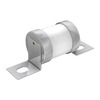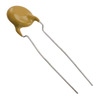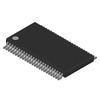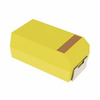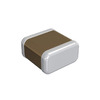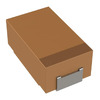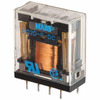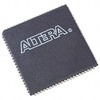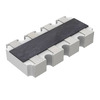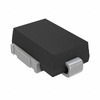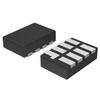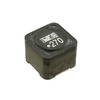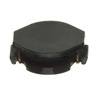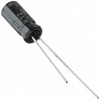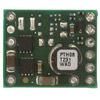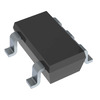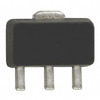What Is a DB9 Connector and How Is It Used
The DB9 connector is a compact, 9-pin connector widely used for serial communication, allowing reliable data transfer between devices. In this article, you'll discover what makes the DB9 connector versatile, its key features, and where it’s commonly used.Catalog
[IMAGE OF DB9]
Introduction to the DB9 Connector
The DB9 connector, initially named DE-9, is a small, 9-pin analog socket and part of the D-Subminiature (D-Sub) family. Recognizable by its D-shaped shell, this connector has one of the smallest footprints among D-Sub connectors. Commonly used in serial communication, it follows the RS-232 standard, enabling devices to exchange data reliably. You may also encounter DB9-DB25 adapters, which allow seamless conversion between DB9 and DB25 sockets, making it adaptable to various setups.
Typical Applications for DB9 Connectors
Once widespread on personal computers and servers, DB9 connectors were primarily used for connecting peripheral devices like keyboards, mice, and joysticks. Designed around the EIA/TIA 232 serial interface standard, DB9 connectors are compatible with numerous devices thanks to their standardized pin configuration. This flexibility made them valuable for data connectivity applications, especially through DB9 cable assemblies. While newer technologies such as USB and PS/2 have taken over many of its functions, DB9 connectors remain popular with older equipment, providing a reliable method for serial communication.
Key Features of the DB9 Connector
Reversible Usage for Flexibility
The DB9 connector is designed to be used with either male or female captive ports, offering flexibility in setup. This reversible feature allows you to match it with various devices or systems, making it a practical choice for different configurations without compatibility concerns.
Protection on All Data Lines
One of the most valuable features of the DB9 connector is its built-in protection on all nine data lines. This protection helps shield the connected devices from potential disruptions, providing a stable environment for data transmission. This is especially useful in setups where reliable, uninterrupted data flow is essential.
D-Shell Chassis for Added Stability
The D-shaped shell of the DB9 not only helps it fit securely into ports but also adds an extra layer of protection. This D-shell chassis is designed to secure the connection firmly, preventing accidental disconnections and protecting the internal components of the connector. It’s a practical feature that enhances the durability of your setup.
High-Speed Avalanche Diodes for Surge Suppression
The DB9 connector uses high-speed avalanche diodes, which are designed to divert any excess energy away from your devices. These diodes protect the connected equipment by directing excess surge energy to the ground, making the DB9 a suitable choice in environments where surge protection is a priority.
Reliable Surge Suppression for Data Equipment
For devices like data terminals, PCs, printers, and modems, the DB9 provides reliable surge suppression. This feature helps ensure that these devices are protected from sudden power spikes, which can cause damage or data loss. It makes the DB9 connector especially useful in settings where dependable protection for data equipment is required.
DB9 Connector Specifications
Technical specifications, features, characteristics, and components with comparable specifications of Tripp Lite DB9
[TABLE OF DB9 technical specifications, attributes, parameters, and parts with similar specifications to Tripp Lite DB9]
DB9 Pin Configuration
[IMAGE OF DB9 Pinout]
Comparison of DB9 Connector with RS232 Standard
While DB9 refers to the physical 9-pin connector often used for serial cables, RS-232, sometimes called EIA-232, defines the communication standard itself. RS-232 describes how two devices can communicate over a serial connection, while the DB9 connector physically facilitates this link. Think of RS-232 as the “language” used for communication, with DB9 acting as the hardware that enables the devices to “speak” this language through the appropriate wiring and pin configurations.
[IMAGE OF RS232 Pinout]
DB9 Connector Manufacturer Overview
Tripp Lite, a recognized name for reliability, has been producing DB9 connectors and other technology solutions for over 95 years. With a product lineup that includes more than 4,000 items, Tripp Lite helps power and connect various types of electronic equipment across personal, business, and data center environments. Headquartered in Chicago, Illinois, and with a presence worldwide, Tripp Lite’s products continue to support reliable connectivity solutions that meet users’ needs globally.
Frequently Asked Questions [FAQ]
1. How many pins does a DB9 connector have?
A DB9 connector has 9 pins, each designed to carry a specific signal or data. These pins allow the DB9 connector to handle various data transmission tasks, making it suitable for devices that rely on serial communication.
2. Is a DB9 connector the same as a VGA connector?
No, a DB9 connector is not the same as a VGA connector. Although both are part of the D-Sub family, they serve different purposes and have different pin configurations. DB9 has 9 pins and is often used for serial communication, while VGA connectors typically have 15 pins and are used for video display connections.
Acerca de nosotros
ALLELCO LIMITED
Lee mas
Consulta rápida
Envíe una consulta, responderemos de inmediato.
Preguntas frecuentes [FAQ]
1. How many pins does a DB9 connector have?
A DB9 connector has 9 pins, each designed to carry a specific signal or data. These pins allow the DB9 connector to handle various data transmission tasks, making it suitable for devices that rely on serial communication.
2. Is a DB9 connector the same as a VGA connector?
No, a DB9 connector is not the same as a VGA connector. Although both are part of the D-Sub family, they serve different purposes and have different pin configurations. DB9 has 9 pins and is often used for serial communication, while VGA connectors typically have 15 pins and are used for video display connections.
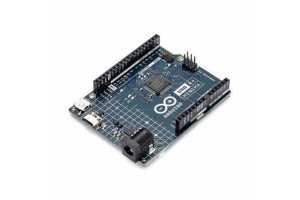
Una guía completa de los mínimos Arduino Uno R4
en 14/11/2024
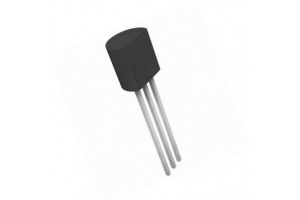
Complete Guide to the 2N3906 PNP Transistor
en 14/11/2024
Publicaciones populares
-

¿Qué es GND en el circuito?
en 01/01/1970 3204
-

Guía del conector RJ-45: códigos de color del conector RJ-45, esquemas de cableado, aplicaciones R-J45, hojas de datos RJ-45
en 01/01/1970 2768
-
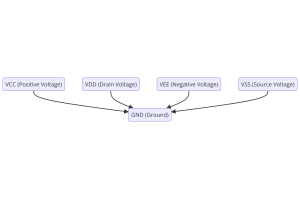
Comprensión de los voltajes de la fuente de alimentación en Electronics VCC, VDD, VEE, VSS y GND
en 18/11/0400 2475
-
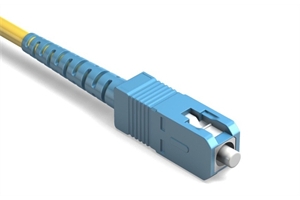
Tipos de conector de fibra: SC vs LC y LC vs MTP
en 01/01/1970 2226
-

Comparación entre DB9 y RS232
en 01/01/1970 1847
-

¿Qué es una batería LR44?
La electricidad, esa fuerza ubicua, impregna en silencio todos los aspectos de nuestra vida diaria, desde dispositivos triviales hasta equipos médicos potencialmente mortales, juega un papel silencioso.Sin embargo, realmente comprender esta energía, especialmente cómo almacenarla y producirla de manera eficiente, no es una tarea fácil.Es en este fondo que este artículo se centrará en un tipo...en 01/01/1970 1821
-

Comprender los fundamentos: resistencia a la inductancia y capacidad
En la intrincada danza de la ingeniería eléctrica, un trío de elementos fundamentales toma el centro del escenario: inductancia, resistencia y capacitancia.Cada uno tiene rasgos únicos que dictan los ritmos dinámicos de los circuitos electrónicos.Aquí, nos embarcamos en un viaje para descifrar las complejidades de estos componentes, para descubrir sus distintos roles y usos prácticos dentr...en 01/01/1970 1775
-

Guía integral de batería CR2430: especificaciones, aplicaciones y comparación con las baterías CR2032
¿Qué es la batería CR2430?Beneficios de las baterías CR2430NormaAplicaciones de batería CR2430CR2430 equivalenteCR2430 vs CR2032Batería CR2430 TamañoQué buscar al comprar el CR2430 y los equivalentesHoja de datos pdfPreguntas frecuentes Las baterías son el corazón de pequeños dispositivos electrónicos.Entre los muchos tipos disponibles, las células de monedas juegan un papel crucial, ...en 01/01/1970 1751
-

¿Qué es RF y por qué lo usamos?
La tecnología de radiofrecuencia (RF) es una parte clave de la comunicación inalámbrica moderna, lo que permite la transmisión de datos a largas distancias sin conexiones físicas.Este artículo profundiza en los conceptos básicos de RF, explicando cómo la radiación electromagnética (EMR) hace posible la comunicación de RF.Exploraremos los principios de EMR, la creación y el control de l...en 01/01/1970 1739
-

Guía completa de HFE en transistores
Los transistores son componentes cruciales en dispositivos electrónicos modernos, lo que permite la amplificación y el control de la señal.Este artículo profundiza en el conocimiento que rodea HFE, incluida cómo seleccionar el valor de HFE de un transistor, cómo encontrar HFE y la ganancia de diferentes tipos de transistores.A través de nuestra exploración de HFE, obtenemos una comprensió...en 18/11/5600 1726

